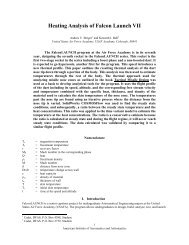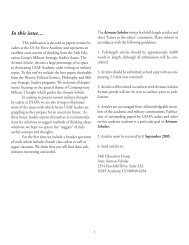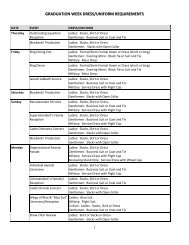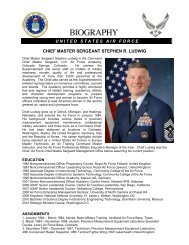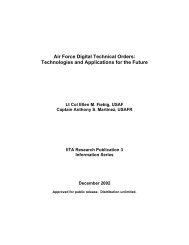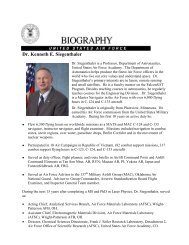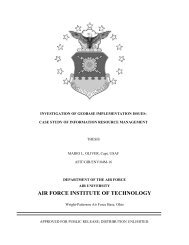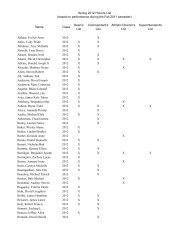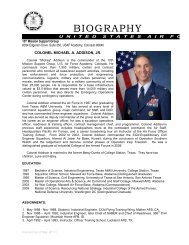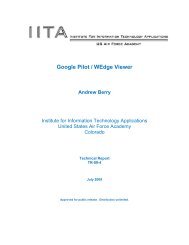the rollback of south africa's biological warfare program
the rollback of south africa's biological warfare program
the rollback of south africa's biological warfare program
Create successful ePaper yourself
Turn your PDF publications into a flip-book with our unique Google optimized e-Paper software.
During WWII, South African Prime Minister Jan Smuts was a member <strong>of</strong><br />
<strong>the</strong> British War Cabinet and party to CBW planning. For example, <strong>the</strong> War<br />
Cabinet, in 1943, planned to retaliate against <strong>the</strong> threat <strong>of</strong> Nazi <strong>biological</strong><br />
<strong>warfare</strong> (BW) on British livestock. The plan was to use anthrax spores,<br />
released by 500-pound cluster bombs, each containing over 100 four-pound<br />
spore devices. Trials at Porton Down indicated that <strong>the</strong> cluster bombs<br />
produced effective aerosol concentration <strong>of</strong> spores that covered nearly 100<br />
acres from impact. The War Cabinet viewed BW as a “quick-fix” solution<br />
weapon requiring no special munitions or hardware. The British would simply<br />
charge ordinary cattle cakes with anthrax spores. This was a neat and simple<br />
example <strong>of</strong> wholly effective, precision deliverance, literally down <strong>the</strong> throat<br />
and into <strong>the</strong> stomach <strong>of</strong> targeted cattle. By <strong>the</strong> end <strong>of</strong> WWII, <strong>the</strong> British had<br />
stockpiled five million cakes. 3 During <strong>the</strong> Second World War, South Africa<br />
learned from <strong>the</strong> British <strong>the</strong> lesson that BW was simple technology that anyone<br />
could use and that it could be effective, under certain conditions, in Africa. 4<br />
In <strong>the</strong> 1940s and 1950s, South Africa’s wartime connections with Britain<br />
and <strong>the</strong> United States continued. South African <strong>of</strong>ficers trained in Britain and<br />
<strong>the</strong> United States in chemical and <strong>biological</strong> <strong>warfare</strong> strategy and tactics. 5 In<br />
<strong>the</strong> 1950s, <strong>the</strong> Eisenhower administration initiated <strong>the</strong> United States Peaceful<br />
Nuclear Energy <strong>program</strong>, which proved to be a significant factor contributing<br />
to South Africa’s ability to produce nuclear weapons. 6<br />
After <strong>the</strong> Second World War, in 1946, South Africa dumped large<br />
quantities <strong>of</strong> mustard gas out to sea. However, South Africa did not roll back<br />
its CBW <strong>program</strong> entirely. According to Dr. Vernon Joynt <strong>of</strong> Mechem and <strong>the</strong><br />
Council for Scientific and Industrial Research (CSIR), 7 <strong>the</strong> literature on <strong>the</strong><br />
World War II <strong>program</strong> was maintained. Also, <strong>the</strong> South African Defense Force<br />
(SADF) maintained a small military <strong>program</strong> related to CBW research and<br />
development. The government also maintained funding for a modest number <strong>of</strong><br />
basic research projects located in <strong>the</strong> Afrikaans universities and o<strong>the</strong>r<br />
3




